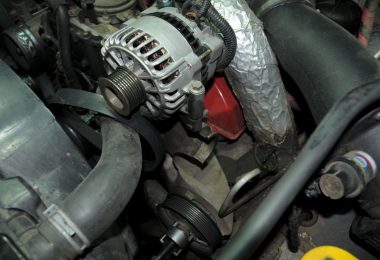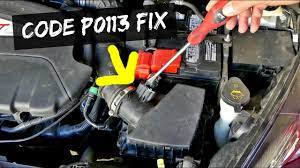Why shouldn’t I ignore warning light is because ignoring your vehicle’s warning lights is a bad idea. You should check them regularly and let your service center know about any issues that you identify.
Engine-Coolant Temperature Warning Light
The Engine Coolant Temperature Warning Light is a good indicator of engine issues. If you see this light come on, it’s important to be aware of what it means and what you should do about it.
The Engine Coolant Temperature Warning Light comes on when the engine coolant temperature reaches 230 degrees Fahrenheit or higher. This could mean that your thermostat is faulty or that there is a leak somewhere in your cooling system, like a blown head gasket or cracked radiator cap.
If the light stays on once you’ve started your car, it’s time to take action because this could indicate an overheating condition which could damage other parts like pistons and cylinders if left unchecked for too long (source).
Brake Warning Light
If the brake warning light stays on, it means that something has gone wrong with your brakes. There are several things you can check if this happens:
- Make sure that your tires are properly inflated and not worn out. If either of these things is incorrect, it could cause problems with how well your brakes work.
- Check for leaks in the hydraulic system, which may be caused by worn-out seals or hoses.
- Ensure that the rotors and drums haven’t warped or otherwise become damaged. This can happen if they’re exposed to extreme heat or cold over time—for example, if they’re left unattended without being changed regularly (this includes regular driving).
If none of these steps work, then it’s likely time for a mechanic’s visit!
Battery Alert Light
When the battery light is on, you’re being warned that your battery is low. If you ignore this warning, it won’t be long before your car won’t start at all.
To avoid this problem:
- When the engine isn’t running, don’t leave any electronic devices on that are plugged into a power outlet inside or underneath the vehicle (such as radio receivers, DVD players and cell phone chargers). This can drain the battery faster than normal and cause the “low voltage” indicator light to come on. If possible take out these devices when they are not in use; otherwise unplug them when not required (they still draw power even though they aren’t operating). You should also disconnect any other electrical accessories that may be draining power from your car’s electrical system while parked – such as anti-theft alarm systems or remote controls for automatic door locks/windows etc..
Oil Pressure Light
The oil pressure light is a warning light that illuminates to indicate low oil pressure. The engine relies on oil to lubricate its moving parts and maintain proper operation. Low oil pressure can cause engine damage, and it’s important to address the issue as soon as possible if your car’s engine starts making noises or becomes hard to start. Read Also : What Does High Oil Pressure Mean?
Oil filters out dirt and debris from the motor oil so that it can lubricate your car’s moving parts more effectively, which is why it’s vital for all cars to have an adequate amount of clean motor oil at all times. An easy way you can keep track of when it’s time for an oil change is by checking your vehicle’s dipstick (a long stick with a handle on one end). When you check this stick periodically throughout each month, take note of how much distance there is between the full mark in black ink on one end and any other marks on either side; if there isn’t enough space between these points then you should get new filter!
Tire Pressure Monitoring System (TPMS)
Tire Pressure Monitoring System (TPMS)
A Tire Pressure Monitoring System (TPMS) is a system that monitors the air pressure in your tires. If your TPMS light comes on, check your tires for low pressure and fill them to the proper PSI level. If you have a flat tire, replace it immediately. If you don’t have a spare tire, contact your service center.
Check Engine Light
Take a moment to think about how you’ve treated your car in the past when it comes to warning lights, and then consider these scenarios:
- You know that the check engine light is on, and you ignore it because there is no problem with your car.
- You’re driving along and all of a sudden, the check engine light goes off for no apparent reason—there’s no problem with your car.
- The check engine light comes on while you’re driving down the highway at 70 miles per hour, but there’s nothing wrong with your vehicle; in fact it seems perfectly fine!
- Your vehicle suddenly breaks down while driving at 80 miles per hour because of a serious mechanical issue with some part inside that controls fuel flow or something like that.
Airbag Warning Light
If you see this light on your dashboard, it means your airbag system is not working properly. It could be due to a faulty sensor or a wiring problem. If you have an airbag warning light, or any other warning lights on your dashboard, it is important that you get them checked out as soon as possible because they can be indicators of serious problems with the car’s electrical system. Read Also : What Does an Oil catch Can do
Checking if your airbags are working correctly:
First step – Turn the ignition key to ON but do not start the engine. The dashboard indicator should go off within 15 seconds of starting up and then go back on when you turn off and re-start again. If this happens, then everything is ok!
Second step – Start the car but don’t drive away yet! If both of these steps worked properly then there shouldn’t be any issues with either front passenger seat belt buckle being broken (in which case maybe it would’ve triggered one of those “Buckle Up” messages before) or damaged wiring inside those two areas (which would explain why no other warning lights came up).
Your vehicle’s warning lights are the first sign that something may be wrong with your car. Pay attention to them, and contact your service center as soon as you can.
- You should not ignore warning lights because they are the first sign that something may be wrong with your car.
- Ignoring warning lights can lead to serious consequences, such as an engine malfunction and even a collision if the horn fails to work during an emergency situation.
- How do you know if you have a problem with your car? If a light comes on, check for it in the owner’s manual or consult one of our technicians at Service A Plus Auto Repair & Tire Center. Then bring your vehicle in for service so we can identify and repair what needs fixing.
Conclusion
The best way to avoid serious problems is by having your vehicle regularly inspected by a trusted service center. They will be able to diagnose any issues and repair them quickly so that you can continue driving safely.







